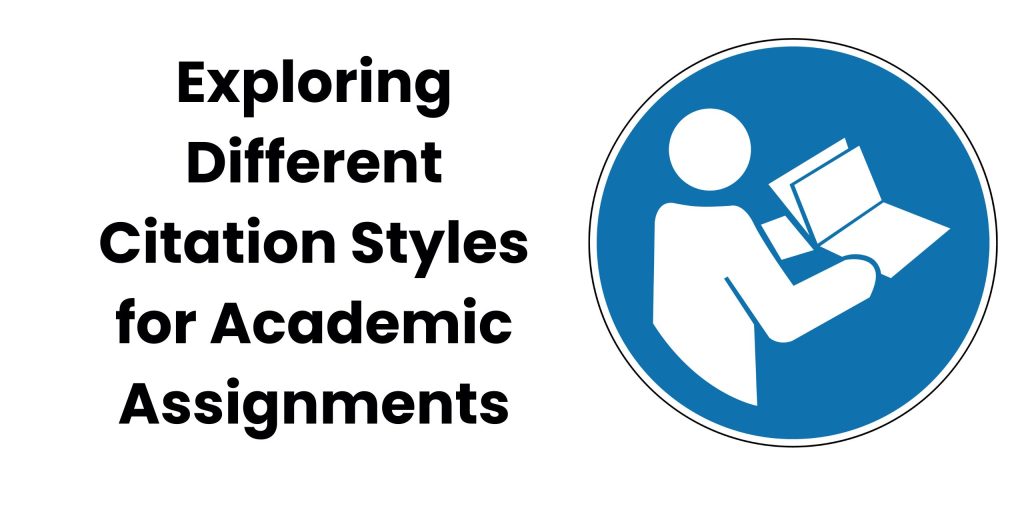Citing sources is an essential component of academic writing. Proper citation gives credit to the original authors, acknowledges the sources of information, and adds credibility to your work. Different academic disciplines and institutions often have specific citation styles they prefer. In this blog post, we will explore some commonly used citation styles and provide an overview of their key features.
- Modern Language Association (MLA) Style: The MLA style is commonly used in the humanities, such as literature, languages, and cultural studies. It emphasizes the author’s name and the page number in parentheses within the text, with a corresponding detailed entry in the Works Cited page at the end of the document. MLA includes guidelines for formatting papers, in-text citations, and the Works Cited page.
Example In-Text Citation (MLA): According to Smith, “the rise of social media has transformed communication” (45).
- American Psychological Association (APA) Style: APA style is widely used in the social sciences, including psychology, sociology, and education. It focuses on author-date citations within the text, followed by a detailed reference list at the end of the document. APA provides guidelines for formatting papers, in-text citations, reference lists, and the inclusion of headings and subheadings.
Example In-Text Citation (APA): (Smith, 2019)
- Chicago Manual of Style (CMS): The Chicago Manual of Style is often used in history, literature, and the humanities. It offers two citation systems: the notes and bibliography style (often used in humanities) and the author-date system (commonly used in social sciences). The notes and bibliography style uses footnotes or endnotes to cite sources and provides a bibliography at the end of the document, while the author-date system uses parenthetical citations within the text and a reference list at the end.
Example Footnote Citation (CMS): ^1 Smith, John. Book Title (City: Publisher, Year), page number.
- Harvard Referencing Style: The Harvard referencing style is commonly used in various disciplines. It features an author-date citation system, where the author’s name and the publication year are included within the text, along with a reference list at the end of the document. Harvard style allows for both in-text citations and footnotes, depending on the specific requirements of the institution.
Example In-Text Citation (Harvard): According to Smith (2019), “the concept of cultural diversity has gained significant attention.”
- Institute of Electrical and Electronics Engineers (IEEE) Style: IEEE style is predominantly used in engineering, computer science, and other technical fields. It employs a numerical citation system, where sources are assigned a number in square brackets within the text. The detailed citations are then listed in numerical order at the end of the document.
Example Numerical Citation (IEEE): [1]
- Vancouver Style: The Vancouver style is primarily used in the field of medicine and biomedical sciences. It employs a numerical citation system, similar to IEEE style, where sources are assigned a number in square brackets within the text. The references are then listed in numerical order at the end of the document, providing detailed information about each source.
Example Numerical Citation (Vancouver): [1]
- American Medical Association (AMA) Style: AMA style is another citation style used in medical and scientific disciplines. It follows a numerical citation system, similar to Vancouver style. The sources are assigned a superscript number within the text, and a corresponding numbered list of references is provided at the end of the document.
Example Numerical Citation (AMA):¹
- Harvard Business School (HBS) Style: HBS style is specifically designed for business-related disciplines. It utilizes an author-date citation system, similar to Harvard referencing style. In-text citations include the author’s name and the publication year, and a reference list is provided at the end of the document.
Example In-Text Citation (HBS): (Smith, 2019)
- Oxford Standard for Citation of Legal Authorities (OSCOLA): OSCOLA is a citation style primarily used in legal writing, particularly in the United Kingdom. It follows a footnote citation system, where sources are cited as superscript numbers in footnotes or endnotes. A bibliography is typically included at the end of the document, listing all the cited sources.
Example Footnote Citation (OSCOLA):¹
- Turabian Style: Turabian style is a variation of the Chicago Manual of Style and is commonly used in disciplines such as history, arts, and humanities. It offers two documentation systems: notes and bibliography style (similar to Chicago’s) and an author-date system (similar to APA style). Turabian style provides guidelines for formatting papers, footnotes or in-text citations, and reference lists or bibliographies.
Example Footnote Citation (Turabian):²
It’s important to note that citation styles may have specific variations or rules depending on the source type (e.g., books, journal articles, websites) and the specific edition of the style guide you are using. Additionally, citation management tools like EndNote, Zotero, or Mendeley can assist in generating citations and managing references.
When using any citation style, make sure to follow the guidelines provided by your institution or instructor. It’s crucial to maintain consistency throughout your assignment, ensuring that your citations are accurate and complete.
In conclusion, understanding different citation styles and their requirements is essential for academic assignments. Whether you are using MLA, APA, CMS, Harvard, IEEE, or any other style, adhering to the guidelines will help you properly attribute sources, avoid plagiarism, and maintain the integrity of your work. Familiarize yourself with the specific citation style required for your discipline and consult the appropriate style guide for comprehensive instructions.
